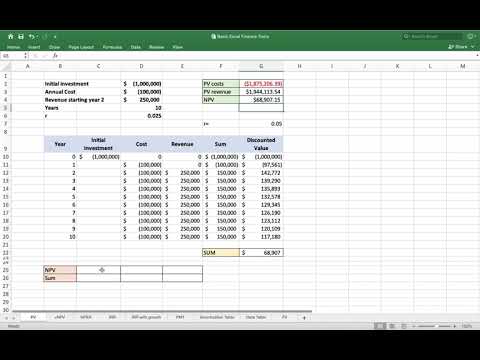What Is Double-Entry Accounting?
Content

In this system, the term “debit” just means that an entry is being made in the left column of a two-column entry system, while “credit” indicates an entry on the right side. Another difference is that double-entry bookkeeping provides more accurate information in the end. The purchase of furniture on credit for $2,500 from Fine Furniture is recorded on the debit side of the account .

Explain differences between accounting practices around the world. Explain why are credit cards not considered a bookkeeping liability. Briefly describe the two fundamental qualities of useful accounting information. Explain the concept of responsibility accounting and its relation with budgeting. Is accounting theory necessary for the making of accounting rules?
Single vs. double-entry bookkeeping
Our goal is to deliver the most understandable and comprehensive explanations of climate and finance topics. Our team of reviewers are established professionals with years of experience in areas of personal finance and climate. Go a level deeper with us and investigate the potential impacts of climate change on investments like your retirement account. Liabilities – This account keeps track of bills and debts that a company owes. Our mission is to empower readers with the most factual and reliable financial information possible to help them make informed decisions for their individual needs.

While double-entry bookkeeping does not eliminate all errors, it is effective in limiting errors on balance sheets and other financial statements because it requires debits and credits to balance. All financial transactions are recorded in the ledger, which is the basis of all financial records. The ledger is a book or computer file that contains all the accounts of a business. Each account in the ledger shows the transactions that have taken place in that account. Ledger is the foundation of all financial records in a double-entry bookkeeping system, and it plays a vital role in ensuring accurate and reliable financial statements. Balance SheetA balance sheet is one of the financial statements of a company that presents the shareholders’ equity, liabilities, and assets of the company at a specific point in time.
Liabilities Account
Explain the difference between the accrual basis of accounting and the cash basis of accounting. Now we understand the principles of double entry, we know that to post a transaction there are two impacts, a debit and a credit. The table below summarises the impact of a debit or a credit on each type of transaction. Accounting is the process of recording, classifying, and summarizing financial transactions to provide information that is useful in making business decisions. A debit in one account offsets a credit in another, so the sum of all debits must equal the sum of all credits.
- While single-entry accounting is simpler to implement, it has significant shortcomings compared with double-entry accounting.
- When using the double-entry accounting system, two things must always be balanced.
- Debit accounts are asset and expense accounts that usually have debit balances, i.e. the total debits usually exceed the total credits in each debit account.
- When you receive the $780 worth of inventory for your business, your inventory increase by $780, and your account payable also increases by $780.
- Since this is an expense, you subtract this amount from your cash balance.
The following chart summarizes the impact of debits and credits for each of the five types of accounts. The double-entry system began to propagate for practice in Italian merchant cities during the 14th century. Before this there may have been systems of accounting records on multiple books which, however, do not basic double entries yet have the formal and methodical rigor necessary to control the business economy. Single-entry accounting involves writing down all of your business’s transactions (revenues, expenses, payroll, etc.) in a single ledger. If you’re a freelancer or sole proprietor, you might already be using this system right now.
Double Entry System of Accounting
For every business transaction, both a debit and a credit entry must be recorded. There are several different types of accounts that are used widely in accounting – the most common ones being asset, liability, capital, expense, and income accounts. Double-entry bookkeeping ensures that for every entry into an account, there needs to be a corresponding and opposite entry into a different account.
- The following chart summarizes the impact of debits and credits for each of the five types of accounts.
- He is the sole author of all the materials on AccountingCoach.com.
- Bookkeeping is an accounting system that entails the proper recording of financial transactions in a company.
- Double-entry bookkeeping shows all of the money coming in, money going out, and, most importantly, the sources of each transaction.
- The accounting cycle varies from different business categories.
Using this system reduces errors and makes it easier to produce accurate financial statements. Include Pant & Machinery, Buildings, Furniture, or any other Asset account. So when we purchase Machinery, the Machinery account is debited, and when we sell Machinery, the Machinery account is credited. This practice ensures that the accounting equation always remains balanced – that is, the left side value of the equation will always match with the right side value.
The way that debits and credits work depends on the type of account. For example, asset accounts have a debit balance, so debits increase them and credits decrease them. Conversely, liabilities have a credit balance; they are increased by credits and decreased by debits. Each journal entry is shown in two columns in an accounting system, with the debits on the left and the credits on the right. In order to achieve the balance mentioned previously, accountants use the concept of debits and credits to record transactions for each account on the company’s balance sheet.
What are the basics of double-entry?
Double-entry bookkeeping is a method of recording transactions where for every business transaction, an entry is recorded in at least two accounts as a debit or credit. In a double-entry system, the amounts recorded as debits must be equal to the amounts recorded as credits.
Learn the principles of double-entry accounting along with simple examples. Here, the asset account – Furniture or Equipment – would be debited, while the Cash account would be credited. It is important to note that after the transaction, the debit amount is exactly equal to the credit amount, $5,000. The main purpose of a double-entry bookkeeping system is to ensure that a company’s accounts remain balanced and can be used to depict an accurate picture of the company’s current financial position.
How double-entry accounting works
Each journal entry has two sides, with debits on the left and credits on the right. The type of account dictates whether it has a normal debit balance or a normal credit balance, and therefore whether debits or credits increase the balance. With double-entry accounting, bookkeepers record each financial event with a journal entry that updates at least two accounts. Bookkeepers choose the appropriate accounts for these entries from a list of the company’s accounts, called the chart of accounts. The chart of accounts includes account names and general ledger codes for all classes of accounts on the balance sheet and income statement. Standard types of accounts include assets, liabilities, equity, revenue and expenses.
What are examples of double-entry?
In a double-entry accounting system, transactions are composed of debits and credits. The debits and credits must be equal in order for the system to remain balanced. For example, if a business pays its electricity bill for $1,200, then it will record an increase to “utilities expense” and a decrease to “cash”.
